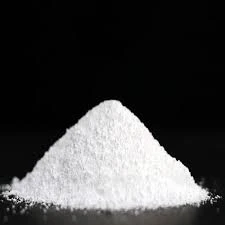Plastic Stabilizers Enhancing Durability and Performance
Plastic materials have become an indispensable part of modern life, finding applications in industries ranging from automotive to packaging, healthcare, and electronics. However, one of the challenges associated with plastics is their susceptibility to deterioration due to environmental factors such as UV radiation, heat, and humidity. This is where plastic stabilizers come into play. These additives are essential for improving the longevity and performance of plastic materials, making them suitable for a variety of applications.
Plastic stabilizers are chemical compounds added to plastics to improve their resistance to thermal and oxidative degradation. They help maintain the physical and mechanical properties of plastics over time, ensuring that they remain effective and safe for use. The need for stabilizers has increased in tandem with the rising demand for high-performance plastics in various sectors. Here, we explore the different types of plastic stabilizers, their functions, and the importance of using these additives in plastic manufacturing.
Types of Plastic Stabilizers
1. Heat Stabilizers One of the primary functions of plastic stabilizers is to enhance thermal stability. Heat stabilizers, typically found in PVC (polyvinyl chloride) formulations, help prevent the degradation that occurs when plastics are exposed to high temperatures during processing or in end-use applications. These stabilizers can include organotin compounds, barium-cadmium systems, and lead-based stabilizers, although lead is being phased out due to health concerns.
2. UV Stabilizers Ultraviolet (UV) radiation can cause significant damage to plastics, leading to discoloration and loss of mechanical properties. UV stabilizers, such as hindered amine light stabilizers (HALS) and UV absorbers, are added to plastic formulations to mitigate these effects. They work by absorbing harmful UV radiation or by neutralizing free radicals generated during exposure, thereby prolonging the lifespan of plastic products.
3. Antioxidants Oxygen and heat can react with polymers, leading to oxidation and deterioration. Antioxidants are added to plastics to protect against oxidative damage. These stabilizers can be primary antioxidants, which interrupt oxidation processes, or secondary antioxidants, which regenerate primary antioxidants and enhance their efficacy.
4. Processing Stabilizers During the manufacturing process, shear forces, and high temperatures can induce degradation in polymers. Processing stabilizers are used to prevent material breakdown during production, ensuring that the final product retains its desired properties. They are particularly important in processes like extrusion and injection molding.
plastic stabilizers

The Importance of Plastic Stabilizers
The inclusion of stabilizers in plastic formulations is crucial for a range of reasons
- Enhanced Durability By providing resistance to environmental stressors, plastic stabilizers help products maintain their integrity and performance over time. This is especially important in applications such as construction materials, automotive components, and outdoor furniture.
- Safety Compliance Many industries are governed by strict regulations regarding material safety and performance standards. The use of appropriate stabilizers ensures compliance with these regulations, thereby reducing the risk of product failures that could lead to safety hazards.
- Sustainability The durability imparted by stabilizers can contribute to the sustainability of plastic products. Longer-lasting materials mean less frequent replacements and reduced waste, aligning with global efforts to promote sustainability and reduce plastic pollution.
Conclusion
Plastic stabilizers play a vital role in enhancing the performance and longevity of various plastic materials. As the demand for durable and high-performance plastics continues to rise, the importance of these additives will only grow. Manufacturers must carefully select appropriate stabilizers to ensure that their products not only meet performance expectations but also comply with safety regulations and sustainability goals. In a world increasingly focused on innovation and environmental responsibility, plastic stabilizers are a key component in the development of robust, reliable, and safe plastic products.

